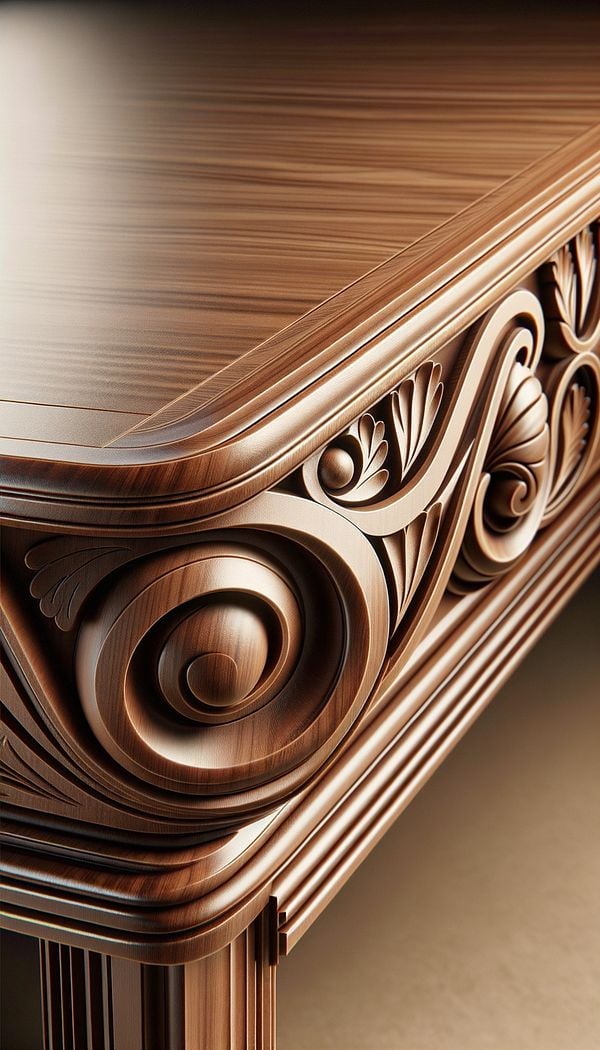What is an Ogee?
An Ogee is a type of curved shape, consisting of a concave arc flowing into a convex arc.
Description
An Ogee is a distinctive curve, recognized by its S-like shape, where the upper part of the curve is concave, and the lower part is convex. This architectural and design feature is commonly found in molding, edges of tables, arches, and mirror frames. Its unique shape adds a touch of elegance and historical depth to a design, making it a popular choice in various interior design styles, particularly those with traditional or classic influences. Ogees have a rich history, originating from ancient Persian architecture and later being adopted in Gothic and Renaissance design movements. Their enduring appeal in interior design is due not only to their aesthetic versatility but also to the way they smoothly blend with both modern and historical themes.
In practical terms, Ogees offer both a decorative and a functional aspect in design. They are often used to add visual interest and depth to otherwise flat or sharp edges, helping to soften the overall appearance of a piece. In architecture, Ogee arches can give a more refined and majestic look to doorways or windows. The dual nature of the curve, both inward and outward, creates a play of light and shadow that can enhance the visual texture of the surfaces it adorns.
Usage
In interior design, Ogees can be seen adorning the edges of wooden furniture such as tables and cabinets, providing an elegant transition between surfaces. They are also a popular motif in the frames of mirrors and pictures, adding a classic touch to wall decorations. Furthermore, Ogee arches are a favored architectural feature in doorways and windows of homes looking to achieve a traditional or Gothic aesthetic.
FAQs
-
Can Ogee designs be found in modern interiors?
Yes, despite their historical origins, Ogee curves can be seamlessly incorporated into modern interior designs. Their elegant form can complement contemporary aesthetics, particularly when used in minimalist designs or as a subtle decorative element amidst clean lines.
-
Are Ogee curves limited to wooden items?
No, Ogee curves can be found in a variety of materials, including plaster, stone, metal, and even textiles such as drapery patterns. Their versatile nature allows them to be integrated into a wide range of design elements.
-
How does the Ogee curve impact the visual appeal of interior design?
The unique S-shaped curve of the Ogee adds depth and sophistication to interior design. It introduces an element of refined elegance and historical context that can elevate the overall aesthetic of a space.
Practical Application
When incorporating Ogees into interior design, consider how they can soften and add interest to the surfaces they adorn. For a more traditional or classic look, use Ogees on furniture edges, window and door frames, or as decorative molding. To subtly integrate Ogees into a modern setting, select pieces where the curve acts as a singular focal point amidst simpler forms. Pairing Ogees with complementary design elements such as intricate patterns, rich textures, or bold colors can further enhance their visual impact.
-
Architectural Elements199 articles
-
Design Styles478 articles
-
Furniture Types599 articles
-
Decorative Techniques322 articles
-
Historical Periods & Movements150 articles
-
CastersCasters are small wheels or rollers designed to be attached to the bottom of an object to enable it to move easily.
-
Cross StretcherA cross stretcher is a structural element used in furniture design for added support and stability.
-
SplatA central element of the backrest in a chair, typically wooden, that provides both support and decorative value.
-
FiberboardFiberboard is a type of engineered wood product made by bonding together wood fibers under heat and pressure.
-
Eight-Way Hand TiedEight-Way Hand Tied is a traditional method of sofa and chair construction known for its durability and comfort.
